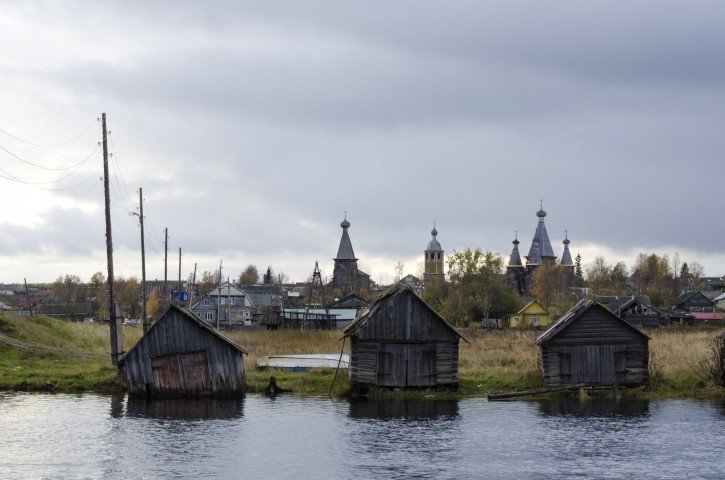
Moscow – Russia has resumed sharing data from radiation monitoring stations in Siberia after some were taken offline following a deadly explosion at a missile range, a nuclear weapons watchdog said Tuesday, while an American expert said the fact that more than one Russian site went offline at the same time suggests it was not the work of Mother Nature.
The Comprehensive Nuclear Test Ban Treaty Organization (CNTBTO) said earlier this week that several Russian radiation monitoring stations went silent shortly after the Aug. 8 explosion at the Russian navy’s testing range in northwestern Russia.
Lassina Zebro, the organization’s executive secretary, said Tuesday on Twitter that the two Russian stations reported to be offline are back in operation and are now backfilling the data. He lauded Moscow for its “excellent cooperation.”
William Tobey, a former deputy administrator at the U.S. National Nuclear Security Administration, said it was “at least an odd coincidence” that the Russian sensors stopped transmitting data about the same time as the explosion occurred.
“Power outages, other failures, can knock down a particular place, but if more than one site is out, it would seem that that is a less likely explanation,” said Tobey, a senior fellow at the Belfer Center for Science and International Affairs at Harvard’s Kennedy School of Government.
Russian authorities have offered changing and contradictory information about the explosion at the testing range in Nyonoksa on the White Sea, fueling speculation about what really happened and what type of weapon was involved.
While the Russian Defense Ministry said no radiation had been released in a rocket engine explosion, officials in the nearby city of Severodvinsk reported a brief rise in radiation levels. The contradiction drew comparisons to Soviet attempts to cover up the 1986 explosion and fire at the Chernobyl nuclear power plant in Ukraine, the world’s worst nuclear disaster.
In his first comments on the explosion, Russian President Vladimir Putin said Monday that it hasn’t posed any radiation threat. Putin added that experts are monitoring the situation to prevent any “any unexpected developments.” He didn’t say what weapon was being tested when the explosion occurred, but described the test as a “state mission of critical importance.”
Russia’s state weather and environmental monitoring agency said the peak radiation reading in Severodvinsk on Aug. 8 was 1.78 microsieverts per hour in just one neighborhood — about 16 times the average. Peak readings in other parts of Severodvinsk varied between 0.45 and 1.33 microsieverts.
The authorities said the brief increase in radiation didn’t pose any health dangers. In fact, the announced peak levels are lower than the cosmic radiation that plane passengers are exposed to on longer flights.
The Russian military said the explosion killed two people and injured six, while the state nuclear corporation Rosatom acknowledged later that it also killed five of its engineers and injured three others. Rosatom said the explosion occurred on an offshore platform during tests of a “nuclear isotope power source.”
Russian officials on Tuesday brushed off suggestions that they were concealing details of the explosion from foreign nations.
Deputy Foreign Minister Sergei Ryabkov told the Interfax news agency that it is Russia’s choice, not an obligation, to share radiation monitoring data under the treaty. He also noted that the international nuclear watchdog’s mission is to monitor the global nuclear test ban, not missile tests like the one conducted in Nyonoksa.
Rosatom’s mention of a “nuclear isotope power source,” led some observers to conclude that the weapon undergoing tests was the “Burevestnik” or “Storm Petrel,” a prospective nuclear-powered cruise missile first mentioned by Putin in 2018 and was code-named “Skyfall” by NATO.
U.S. President Donald Trump backed that theory in a tweet last week, saying that the U.S. is “learning much” from the Skyfall explosion.
The U.S. worked to develop a nuclear-powered missile in the 1960s under Project Pluto, but the idea was discarded as impractical and risky. Tobey said Russia’s apparent revival of the concept raises significant risks.
“Effectively, Russia is thinking about flying around nuclear reactors,” Tobey said. “The very idea of this system is, I think, a risky system. It probably poses more risk to the Russian people than to the American people. If it crashes, it could spread radiation.”
Michael Krepon, a nuclear expert who co-founded the Stimson Center, a nonpartisan public policy research center, said it was not surprising that Russia might take steps to conceal its activities because “they just can’t accept transparency when it comes to screwups.”
“This weapon poses a danger first and foremost to the people who are working on it,” Krepon said. “It’s dumb, it’s stupid, it’s expensive, and there are so many other ways that you can deliver nuclear weapons long distance. The more Putin advertises this system, the more he’s likely to be embarrassed by it.”
Source: VosIzNeias